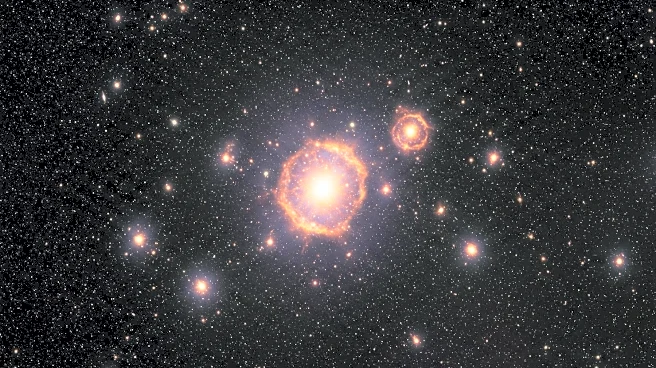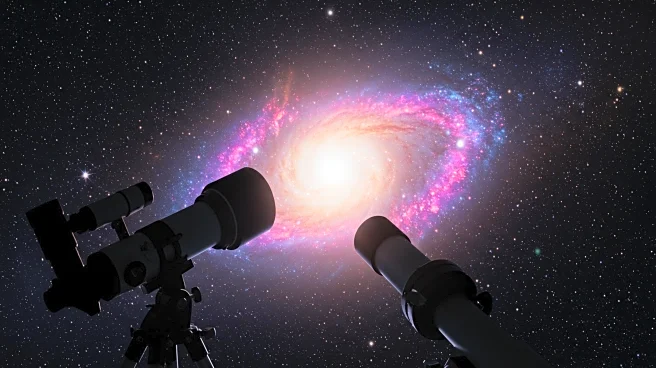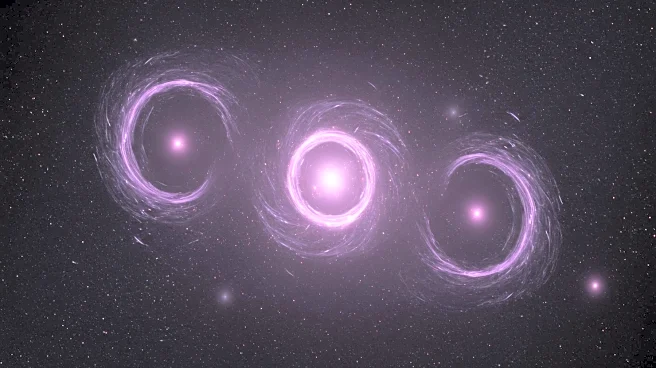What's Happening?
Astronomers from Seoul National University have detected 62 new luminous quasars as part of the All-sky BRIght, Complete Quasar Survey (AllBRICQS). These quasars, powered by supermassive black holes, exhibit high bolometric luminosities and emit electromagnetic radiation across various wavelengths. The discovery was made using data from the Wide-field Infrared Survey Explorer and Gaia Data Release 3, enhancing the understanding of quasar physics and their role in galaxy evolution.
Why It's Important?
The discovery of new quasars provides valuable insights into the nature of active galactic nuclei and the growth of supermassive black holes. Quasars are key to understanding the evolution of galaxies and the dynamics of cosmic structures. The identification of these luminous quasars expands the catalog of known quasars, offering new opportunities for research into their properties and interactions with host galaxies. This advancement in quasar detection methods marks a significant contribution to the field of astronomy.
Beyond the Headlines
The newly discovered quasars include rare and notable objects, such as iron low-ionization broad absorption line quasars. These findings challenge existing classifications and offer new perspectives on quasar diversity. The research highlights the importance of advanced detection techniques in uncovering previously hidden cosmic phenomena. The study's results will serve as a resource for future investigations into quasar evolution, black hole growth, and feedback processes in galaxies.











